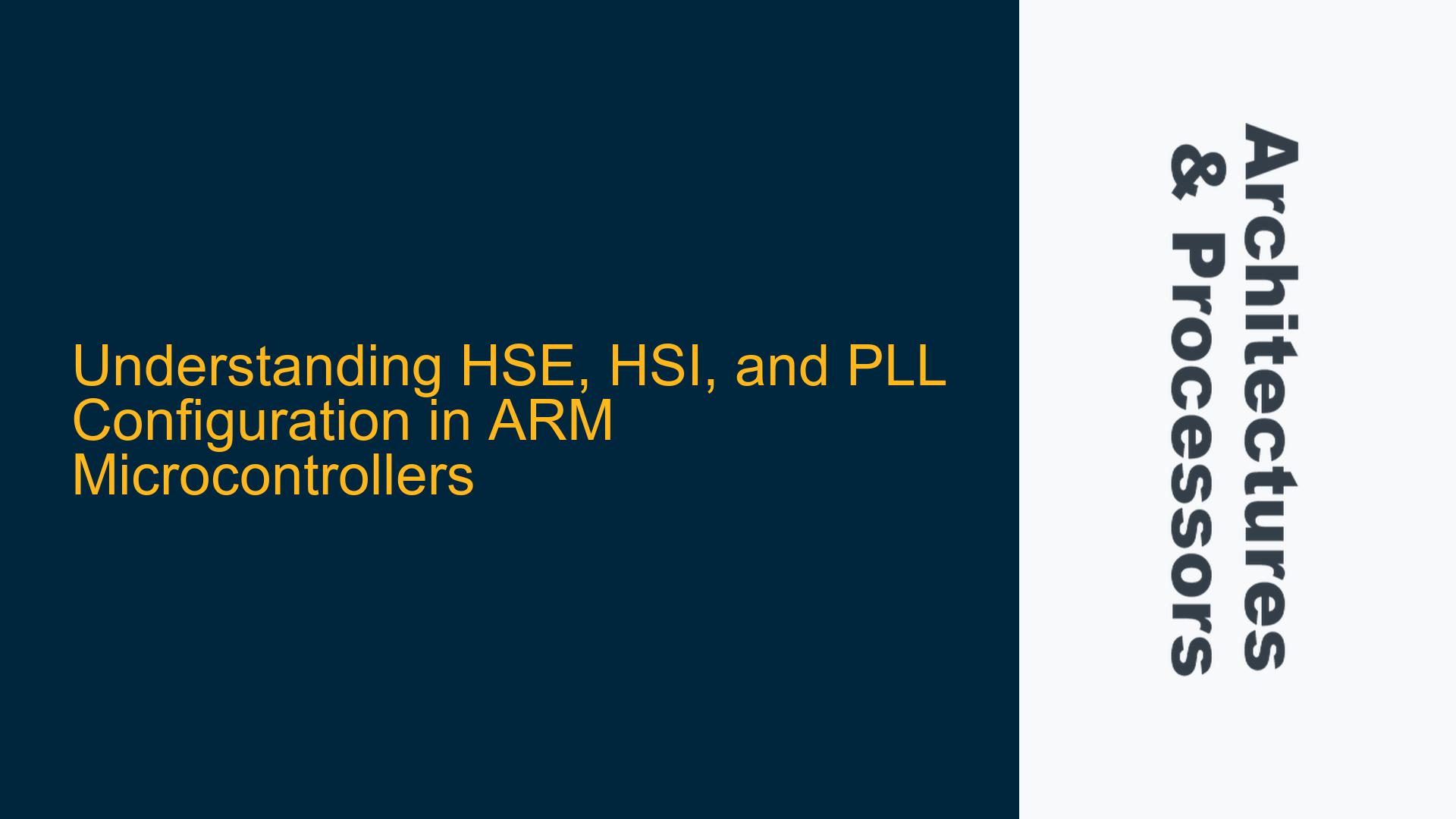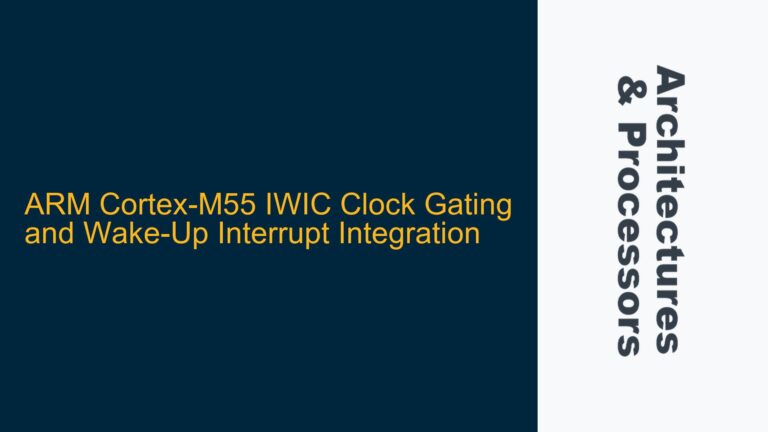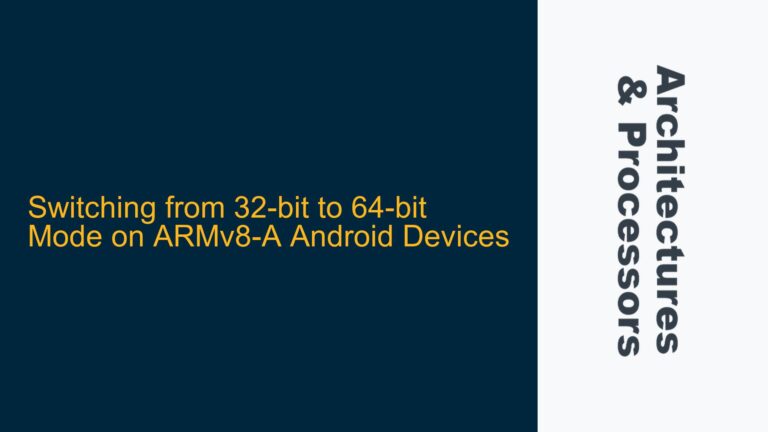HSE, HSI, and PLL: Clock Sources and Multipliers in ARM Microcontrollers
In ARM microcontrollers, the clock system is a critical component that determines the performance and power consumption of the device. The clock system typically consists of multiple clock sources and a Phase-Locked Loop (PLL) to generate the system clock. The High-Speed External (HSE) and High-Speed Internal (HSI) oscillators are two primary clock sources, while the PLL is used to multiply the clock frequency to achieve higher speeds. The PLL configuration involves several parameters such as PLL_M, PLL_N, PLL_P, PLL_Q, and PLL_R, which are used to control the multiplication and division factors within the PLL.
The HSE is an external clock source, typically a crystal or ceramic resonator, that provides a stable and accurate clock signal. The HSI, on the other hand, is an internal RC oscillator that is less accurate but requires no external components. The PLL takes the input clock from either HSE or HSI and multiplies it to generate a higher frequency clock for the system. The PLL_M parameter divides the input clock frequency before it enters the PLL, while PLL_N multiplies the divided frequency. The PLL_P, PLL_Q, and PLL_R parameters are used to further divide the multiplied frequency to generate different clock outputs for various peripherals and the system core.
Misconfiguration of PLL Parameters Leading to Clock Instability
One of the most common issues when configuring the clock system in ARM microcontrollers is the misconfiguration of PLL parameters, which can lead to clock instability or failure to achieve the desired clock frequency. The PLL_M parameter must be set such that the input frequency to the PLL is within the specified range, typically between 1 MHz and 2 MHz. If the input frequency is too high or too low, the PLL may fail to lock, resulting in an unstable clock.
The PLL_N parameter determines the multiplication factor of the PLL. If this value is set too high, the output frequency may exceed the maximum allowable frequency for the microcontroller, leading to potential damage or erratic behavior. Conversely, if PLL_N is set too low, the system may not achieve the required performance. The PLL_P, PLL_Q, and PLL_R parameters are used to divide the PLL output frequency to generate different clock domains. If these parameters are not set correctly, the peripheral clocks may be too fast or too slow, causing communication errors or reduced performance.
Another potential cause of clock instability is the improper selection of the clock source. The HSE provides a more accurate and stable clock compared to the HSI, but it requires external components. If the HSE is not properly configured or if the external crystal is faulty, the system may fail to start or may experience clock drift. The HSI, while less accurate, is more reliable in terms of startup and does not require external components. However, its lower accuracy may not be suitable for applications requiring precise timing.
Configuring HSE, HSI, and PLL Parameters for Optimal Performance
To configure the HSE, HSI, and PLL parameters correctly, it is essential to follow a systematic approach. First, determine the desired system clock frequency and the clock requirements for the peripherals. This will help in selecting the appropriate values for PLL_M, PLL_N, PLL_P, PLL_Q, and PLL_R. The input frequency to the PLL should be calculated by dividing the HSE or HSI frequency by PLL_M. This value must be within the specified range for the PLL to lock correctly.
Next, calculate the VCO output frequency by multiplying the PLL input frequency by PLL_N. The VCO frequency must also be within the specified range, typically between 100 MHz and 432 MHz for many ARM microcontrollers. The system clock frequency is then obtained by dividing the VCO frequency by PLL_P. Similarly, the clock frequencies for the USB and other peripherals are obtained by dividing the VCO frequency by PLL_Q and PLL_R, respectively.
It is also important to ensure that the HSE is properly configured if it is used as the clock source. This involves enabling the HSE oscillator, waiting for it to stabilize, and then switching the system clock source to HSE. If the HSE fails to start, the system should automatically fall back to the HSI to ensure continued operation. The following table summarizes the key parameters and their roles in the clock configuration:
| Parameter | Description | Typical Range |
|---|---|---|
| HSE | High-Speed External oscillator frequency | 4-26 MHz |
| HSI | High-Speed Internal oscillator frequency | 8-16 MHz |
| PLL_M | Division factor for PLL input clock | 1-63 |
| PLL_N | Multiplication factor for VCO | 50-432 |
| PLL_P | Division factor for system clock | 2, 4, 6, 8 |
| PLL_Q | Division factor for USB clock | 2-15 |
| PLL_R | Division factor for other peripherals | 2-15 |
In addition to configuring the PLL parameters, it is crucial to implement proper clock tree management. This includes enabling and disabling clock sources as needed, configuring clock prescalers for peripherals, and ensuring that the clock system is stable before switching to a new clock source. Debugging clock-related issues often involves checking the status of the PLL lock, verifying the clock source, and measuring the actual clock frequencies using oscilloscopes or logic analyzers.
In conclusion, understanding and correctly configuring the HSE, HSI, and PLL parameters is essential for achieving optimal performance and stability in ARM microcontrollers. By following a systematic approach and paying close attention to the details of the clock configuration, developers can avoid common pitfalls and ensure that their systems operate reliably under various conditions.






